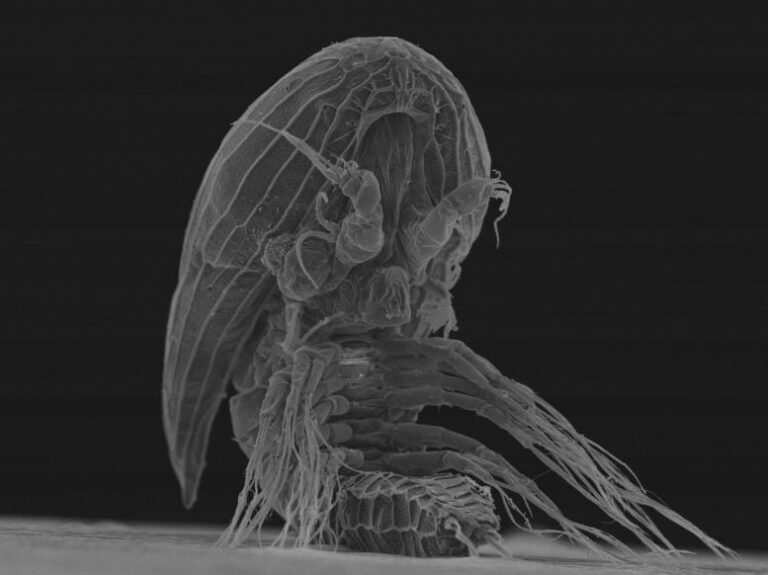Scientists Uncover How a Crop-Killing Pathogen Silences Plant Defenses

Scientists have finally revealed how one of the world’s most notorious crop diseases manages to sneak past plant defenses and destroy harvests. The discovery, led by researchers from the University of York, The James Hutton Institute, and Université Libre de Bruxelles, explains how the pathogen Phytophthora infestans — the microbe responsible for the Irish potato famine — uses a clever biochemical trick to disable plants’ early warning systems.
The findings, published in Nature Communications (2025), describe a family of enzymes that act as the pathogen’s secret weapon. These enzymes, called AA7 oxidases, allow the microbe to switch off the plant’s alarm signals before the plant even realizes it’s under attack.
The Culprit: Phytophthora infestans
Phytophthora infestans is not a fungus, though it behaves like one. It’s actually an oomycete, a type of microorganism that has caused some of the most devastating plant diseases in history. The most infamous case was the Irish potato famine of the mid-1800s, which killed over a million people and forced millions more to emigrate.
Even today, this pathogen remains a global threat, attacking potato and tomato crops across continents. It thrives in cool, wet conditions and spreads quickly through rain and wind, infecting leaves, stems, and tubers. Once established, it can destroy entire fields within days.
Farmers and scientists have fought back for decades through breeding resistant crops and developing fungicides. But Phytophthora infestans continues to evolve, outsmarting new plant varieties and chemical treatments alike. The discovery of how it manipulates plant immunity could mark a turning point in this long battle.
How the Pathogen Disables Plant Defenses
Plants, like animals, have an innate immune system. When pathogens attack, the plant recognizes certain molecules or fragments that signal “damage” — these are known as DAMPs (damage-associated molecular patterns). One of the most important DAMPs comes from pectin, a sugar-rich component of plant cell walls.
When an invader breaks through a plant’s cell wall, pectin fragments — especially short chains called oligogalacturonides (OGs) — are released. These OGs act like alarm bells, alerting the plant to danger and triggering a chain reaction of defenses: production of reactive oxygen species, strengthening of cell walls, and activation of defense genes.
The new research shows that Phytophthora infestans has found a way to cut the wires on this alarm system. It produces special enzymes, AA7 oxidases, that chemically modify those OG molecules before they can sound the alarm.
By oxidizing these pectin fragments, the enzymes neutralize their ability to trigger an immune response. The plant remains unaware that an attack is underway until it’s too late.
The Discovery
The research team identified several genes in P. infestans that encode berberine bridge enzyme-like proteins, also known as AA7 oxidases. These genes were highly active during the early stages of infection — precisely when the pathogen needs to evade the plant’s immune detection.
Microscopic imaging showed that these oxidases concentrate at key infection points: the germ-tube tips (used to penetrate the leaf surface) and the haustoria (structures that extract nutrients from host cells).
To test their importance, scientists used genetic tools to disable these oxidase genes. The result was dramatic — the mutant microbes became significantly weaker, unable to infect host plants efficiently. Without their “alarm-cutting” enzymes, the pathogens lost their stealth advantage.
This experiment confirmed that the AA7 oxidases are essential virulence factors, meaning they play a critical role in helping the pathogen cause disease.
Why This Matters
The discovery provides the first clear explanation of how Phytophthora infestans and similar pathogens suppress plant immunity at the biochemical level. More importantly, it opens new avenues for protecting crops.
If scientists can block these AA7 oxidases or breed plants that resist their effects, farmers could have a powerful new defense against late blight and related diseases.
Dr. Stephen Whisson from The James Hutton Institute emphasized that these enzymes are not unique to one pathogen — they appear to be conserved across many plant diseases caused by oomycetes. That means this single breakthrough could help in designing broad-spectrum strategies to protect a wide range of crops.
In a world facing climate change, with more unpredictable weather and increasing food demand, such innovations are essential. Crop losses due to pathogens already account for up to 40% of global agricultural output, and this number could rise as environmental stress weakens plant resilience.
The Science Behind the Enzyme
So what exactly do these AA7 oxidases do?
In simple terms, they oxidize specific sugars — particularly galacturonic acid, which makes up the backbone of pectin. When plants are attacked, enzymes (from the pathogen or the plant itself) break down pectin, releasing oligogalacturonides (OGs). Normally, these OGs signal the plant to mount defenses.
But when AA7 oxidases modify them, they become chemically altered and can no longer act as effective signals. They are still present, but their message — “we’re under attack!” — no longer reaches the plant’s receptors.
It’s a subtle but devastating trick: the pathogen uses a version of the plant’s own chemistry against it. Plants also produce similar oxidases to control their own signaling, and Phytophthora infestans seems to have evolved a mimicry system to exploit that vulnerability.
Broader Implications
This study doesn’t just explain how one microbe kills plants; it also highlights a common evolutionary theme in host-pathogen interactions. Many pathogens, from bacteria to fungi, have evolved mechanisms to suppress host immunity. What’s striking here is how precisely P. infestans manipulates the plant’s internal language.
The discovery may inspire new approaches to plant breeding. For example, crops could be engineered to:
- Produce OGs that resist oxidation by these enzymes.
- Detect oxidized OGs as a new danger signal.
- Express inhibitors that block the pathogen’s AA7 oxidases.
Beyond potatoes and tomatoes, this mechanism may be widespread among other oomycete pathogens such as Phytophthora sojae, which infects soybeans, or Pythium species, which attack seedlings of many crops.
Understanding these enzymes could therefore have implications for global food security far beyond a single disease.
About Damage Signals and DAMPs
To appreciate why this discovery is so important, it helps to understand DAMP signaling in plants. Unlike humans, plants don’t have mobile immune cells, so they rely on detecting chemical changes in their own tissues. When something — like a microbe or physical injury — damages the cell wall, fragments such as OGs act as molecular alarms.
This concept has been around for years, but only recently have scientists begun to uncover how pathogens can silence these alarms. The discovery of AA7 oxidases adds a new layer to that understanding, revealing that pathogens don’t just break cells; they also manipulate the aftermath of that damage.
The Road Ahead
Now that scientists know what to look for, the next steps will involve:
- Searching for AA7 oxidase inhibitors that could be applied as crop treatments.
- Investigating whether natural plant compounds can block these enzymes.
- Using gene-editing tools like CRISPR to develop resistant crop varieties.
If successful, this could reduce reliance on chemical fungicides and help farmers maintain yields even under changing climate conditions.
This discovery is a striking reminder that pathogens are constantly evolving, and understanding their molecular tricks is the key to staying ahead.
Research Reference:
Lydia R. J. Welsh et al., Oomycetes manipulate plant innate immunity through galacturonide oxidases, Nature Communications (2025)





